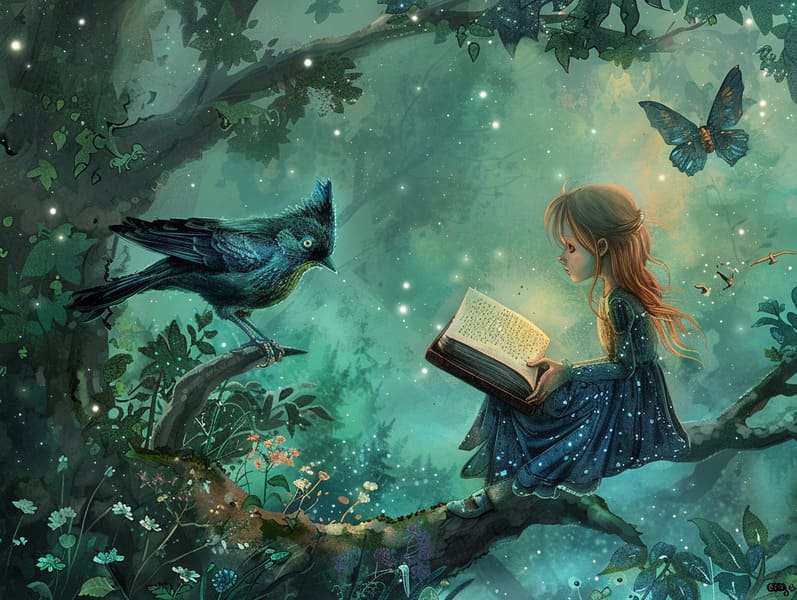The Story Behind Famous Fairy Tales and the Eternal Radiance.
The Story Behind Famous Fairy Tales and the Eternal Radiance.
Blog Article

Traditional fairy tales have deep roots. These tales have been relayed from one generation to the next centuries before they were ever transcribed. They emerged from a variety of traditions, including Western traditions. They were initially narrated among grown-ups, often carrying themes and messages related to the societal norms and beliefs of the time.
The Brothers Grimm, Jacob and Wilhelm (the Grimm brothers), were among the first to compile many of these beloved tales. Their volume, "Grimm's Children's Stories," included narratives like "The Little Glass Slipper," "Hansel and Grethel," and "The True Story of Snow White," which have since become staples in the world of beloved fairy tales. Similarly, Hans Christian Andersen's imaginative tales, such as "The Mermaid," and "The Duckling's Story," have touched hearts worldwide, guaranteeing their place in the pantheon of iconic fairy tales.
Even though they are old, classic fairy tales remain as applicable as ever, especially as children's night stories. These delightful tales are now available in many formats, including vividly illustrated books, fantastical animations, and online fairy tales.
Their lasting appeal can be ascribed to several enchanting factors:
Life Lessons: Timeless fairy tales often impart important moral lessons. Tales like "The Story of the Boy Who Cried Wolf" teach the merit of honesty, while "The Race of the Tortoise and the Hare" emphasize the qualities of persistence and humbleness. These tales offer children clear distinctions between moral and immoral, forming their moral compass in a soft yet deep way.
Empathy and Understanding: Classic fairy tales frequently involve characters facing struggles and tests, provoking audiences to sympathize with their struggles and root for their triumphs. For instance, "Beauty's Beast" emphasizes the necessity of appreciating inner worth to understand the true nature of a person, building kindness and discernment.
Cultural Appreciation: Many old fairy tales are interwoven with the cultural contexts from which they developed. Learning from these tales can provide informative snapshots into different historical contexts, developing a sense of global appreciation and comprehension.
Fantasy and Imagination: The enchanted elements in classic fairy tales—supernatural elements—fire up children’s fantasies. These tales lead readers to enchanted realms, revitalizing fantastical thinking and a sense of curiosity that lasts a lifetime.
Traditional fairy tales are not only mesmerizing but also informative. They serve as captivating tools in cultivating various thinking and feeling skills in little ones. When ancient fairy tales are read aloud, they promote verbal skills by presenting new word meanings and detailed sentence structures. This practice also improves hearing abilities and concentration, as young readers stay focused, prepared to see what happens next.
Furthermore, examining the themes and characters of timeless fairy tales can develop thinking skills and logical thinking. Young ones are educated to discern patterns, forecast, and realize cause and effect. These contemplations also advance kids express their thoughts and feelings, enhancing their emotional intelligence.
In today’s technological era, the abundance of web-based fairy tales has made these tales more attainable than ever. Internet sites and online apps share extensive collections of Grimm's fairy tales that can be viewed or listened on anytime, anywhere. Fairy tales voiced are particularly favored, providing an enjoyable way for little ones to be a part of these charming tales. Read-aloud books and read-out-loud stories carry characters and settings to life, often augmented by spellbinding sound effects and songs that enrich the tale-telling adventure.
The timeless charm of timeless fairy tales lies in their ability to alter to new eras while holding onto their underlying messages. Contemporary revisions of these tales often showcase more diverse characters and modern settings, making them relatable to today’s audience. However, the basic principles of spirit, humanity, and justness remain unchanged, continuing to reach readers of all ages.
Timeless fairy tales also offer a sense of reassurance and familiarity. They showcase a neat narrative with a evident beginning, middle, and end, often coming to a close with the closure of conflicts and the triumph of truth over falsehood. This steadiness can be calming for kids, affording a sense of invariability in an fluid world.
Old fairy tales continue to spellbind and guide new generations, maintaining their grace and importance in modern society. As children's bedtime stories, they render a perfect blend of fascination and comprehension, enhancing moral values, empathy, and creativity. The availability of web-based fairy tales and the in demand status of fairy tales spoken ensure that these timeless fairy check here tales remain within reach to new generations.
By continuing and broadcasting these fairy tales, we continue to acknowledge the rich tapestry of myths and cultural heritage. Whether you are reading a gorgeously illustrated book, accessing a virtual library, or listening via an sound book, the delight of Grimm's fairy tales is always within reach. These stories show us of the unchanging influence of fairy tales and its ability to bond us across generations and cultures.
If you are reading a artistically illustrated book, seeing a electronic collection, or listening to an read-aloud story, the mystique of popular fairy tales is always within reach.
These narratives reveal of the consistent nature of narratives and its ability to connect us across generations and cultures, establishing a link that charms and informs alike.